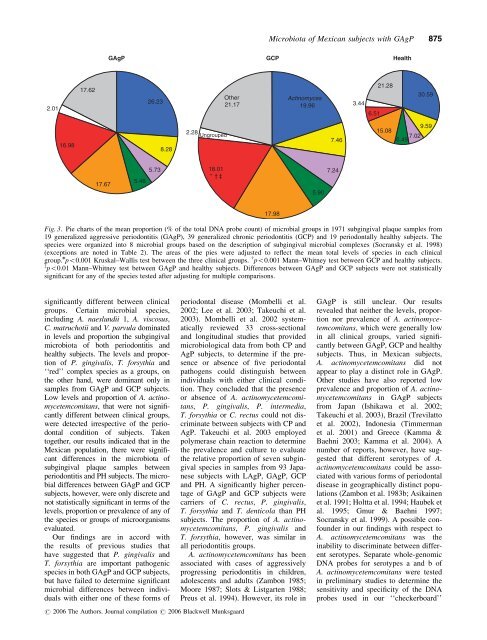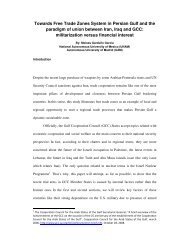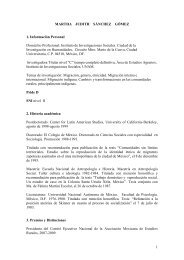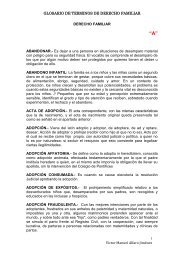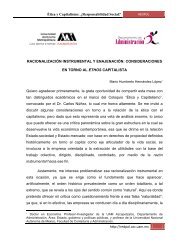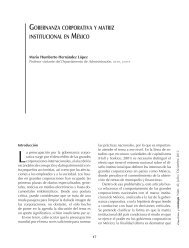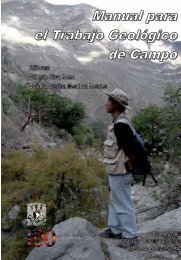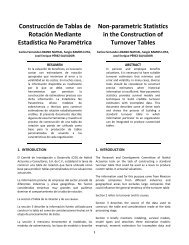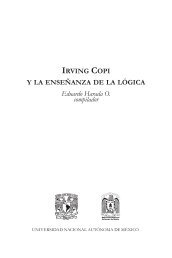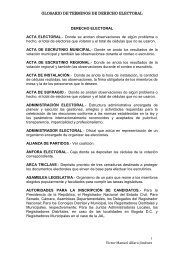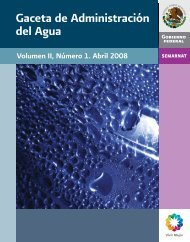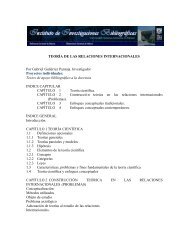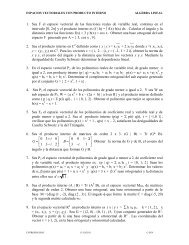PDF(145K) - Wiley Online Library
PDF(145K) - Wiley Online Library
PDF(145K) - Wiley Online Library
You also want an ePaper? Increase the reach of your titles
YUMPU automatically turns print PDFs into web optimized ePapers that Google loves.
Microbiota of Mexican subjects with GAgP 875<br />
GAgP<br />
GCP<br />
Health<br />
2.01<br />
17.62<br />
26.23<br />
Other<br />
21.17<br />
Actinomyces<br />
19.96<br />
3.44<br />
6.51<br />
21.28<br />
30.59<br />
16.98<br />
8.28<br />
2.28<br />
Ungrouped<br />
7.46<br />
9.59<br />
15.08<br />
7.02<br />
6.49<br />
17.67<br />
5.73<br />
5.48<br />
18.01<br />
* † ‡<br />
5.90<br />
7.24<br />
Fig. 3. Pie charts of the mean proportion (% of the total DNA probe count) of microbial groups in 1971 subgingival plaque samples from<br />
19 generalized aggressive periodontitis (GAgP), 39 generalized chronic periodontitis (GCP) and 19 periodontally healthy subjects. The<br />
species were organized into 8 microbial groups based on the description of subgingival microbial complexes (Socransky et al. 1998)<br />
(exceptions are noted in Table 2). The areas of the pies were adjusted to reflect the mean total levels of species in each clinical<br />
group. n po0.001 Kruskal–Wallis test between the three clinical groups. w po0.001 Mann–Whitney test between GCP and healthy subjects.<br />
z po0.01 Mann–Whitney test between GAgP and healthy subjects. Differences between GAgP and GCP subjects were not statistically<br />
significant for any of the species tested after adjusting for multiple comparisons.<br />
17.98<br />
significantly different between clinical<br />
groups. Certain microbial species,<br />
including A. naeslundii 1, A. viscosus,<br />
C. matruchotii and V. parvula dominated<br />
in levels and proportion the subgingival<br />
microbiota of both periodontitis and<br />
healthy subjects. The levels and proportion<br />
of P. gingivalis, T. forsythia and<br />
‘‘red’’ complex species as a groups, on<br />
the other hand, were dominant only in<br />
samples from GAgP and GCP subjects.<br />
Low levels and proportion of A. actinomycetemcomitans,<br />
that were not significantly<br />
different between clinical groups,<br />
were detected irrespective of the periodontal<br />
condition of subjects. Taken<br />
together, our results indicated that in the<br />
Mexican population, there were significant<br />
differences in the microbiota of<br />
subgingival plaque samples between<br />
periodontitis and PH subjects. The microbial<br />
differences between GAgP and GCP<br />
subjects, however, were only discrete and<br />
not statistically significant in terms of the<br />
levels, proportion or prevalence of any of<br />
the species or groups of microorganisms<br />
evaluated.<br />
Our findings are in accord with<br />
the results of previous studies that<br />
have suggested that P. gingivalis and<br />
T. forsythia are important pathogenic<br />
species in both GAgP and GCP subjects,<br />
but have failed to determine significant<br />
microbial differences between individuals<br />
with either one of these forms of<br />
periodontal disease (Mombelli et al.<br />
2002; Lee et al. 2003; Takeuchi et al.<br />
2003). Mombelli et al. 2002 systematically<br />
reviewed 33 cross-sectional<br />
and longitudinal studies that provided<br />
microbiological data from both CP and<br />
AgP subjects, to determine if the presence<br />
or absence of five periodontal<br />
pathogens could distinguish between<br />
individuals with either clinical condition.<br />
They concluded that the presence<br />
or absence of A. actinomycetemcomitans,<br />
P. gingivalis, P. intermedia,<br />
T. forsythia or C. rectus could not discriminate<br />
between subjects with CP and<br />
AgP. Takeuchi et al. 2003 employed<br />
polymerase chain reaction to determine<br />
the prevalence and culture to evaluate<br />
the relative proportion of seven subgingival<br />
species in samples from 93 Japanese<br />
subjects with LAgP, GAgP, GCP<br />
and PH. A significantly higher percentage<br />
of GAgP and GCP subjects were<br />
carriers of C. rectus, P. gingivalis,<br />
T. forsythia and T. denticola than PH<br />
subjects. The proportion of A. actinomycetemcomitans,<br />
P. gingivalis and<br />
T. forsythia, however, was similar in<br />
all periodontitis groups.<br />
A. actinomycetemcomitans has been<br />
associated with cases of aggressively<br />
progressing periodontitis in children,<br />
adolescents and adults (Zambon 1985;<br />
Moore 1987; Slots & Listgarten 1988;<br />
Preus et al. 1994). However, its role in<br />
r 2006 The Authors. Journal compilation r 2006 Blackwell Munksgaard<br />
GAgP is still unclear. Our results<br />
revealed that neither the levels, proportion<br />
nor prevalence of A. actinomycetemcomitans,<br />
which were generally low<br />
in all clinical groups, varied significantly<br />
between GAgP, GCP and healthy<br />
subjects. Thus, in Mexican subjects,<br />
A. actinomycetemcomitans did not<br />
appear to play a distinct role in GAgP.<br />
Other studies have also reported low<br />
prevalence and proportion of A. actinomycetemcomitans<br />
in GAgP subjects<br />
from Japan (Ishikawa et al. 2002;<br />
Takeuchi et al. 2003), Brazil (Trevilatto<br />
et al. 2002), Indonesia (Timmerman<br />
et al. 2001) and Greece (Kamma &<br />
Baehni 2003; Kamma et al. 2004). A<br />
number of reports, however, have suggested<br />
that different serotypes of A.<br />
actinomycetemcomitans could be associated<br />
with various forms of periodontal<br />
disease in geographically distinct populations<br />
(Zambon et al. 1983b; Asikainen<br />
et al. 1991; Holtta et al. 1994; Haubek et<br />
al. 1995; Gmur & Baehni 1997;<br />
Socransky et al. 1999). A possible confounder<br />
in our findings with respect to<br />
A. actinomycetemcomitans was the<br />
inability to discriminate between different<br />
serotypes. Separate whole-genomic<br />
DNA probes for serotypes a and b of<br />
A. actinomycetemcomitans were tested<br />
in preliminary studies to determine the<br />
sensitivity and specificity of the DNA<br />
probes used in our ‘‘checkerboard’’


